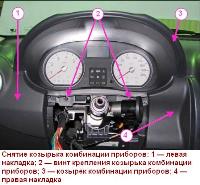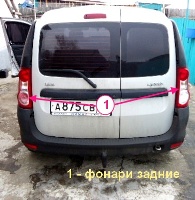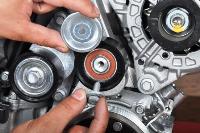On vehicles without ABS, a rear brake pressure regulator is installed
Remove
Putting the car on a lift.

Using a wrench for brake pipes, we unscrew the fittings of brake pipes 1 and 2, Figure 1, from the gearbox 4 of the rear brakes and install plugs on the brake pipes and into the holes of the pressure regulator.
Disconnect the link 5 of the rear brake pressure regulator drive from the beam 6 of the rear suspension arms.
With a head of 10, we unscrew the bolts 3 of the pressure regulator and remove the regulator.
Installation
Reinstall the rear brake pressure regulator and secure with bolts.
The torque of the bolts is 12 Nm (1.2 kgf.m) (replaceable head 10, extension, torque wrench).
Remove the plugs from the openings of the regulator and the brake pipes and screw the fittings of the brake pipes into the openings of the rear brake pressure regulator. Tightening torque of fittings 14 Nm (1.4 kgf.m).
Connect the rear brake pressure regulator linkage to the rear suspension beam.
Bleed the brake system.
Rear brake pressure regulator drive adjustment
When adjusting, the car must be in running order and stand on wheels.

Adjust the rear brake pressure regulator by:
- - unscrew the coupling bolt 2, figure 2, of the adjusting sleeve;
- - set the adjusting clutch 3 of the drive lever so that it touches the lever 4 of the rear brake pressure regulator;
- - tighten the coupling bolt. Bolt tightening torque 12 Nm (1.2 kgf.m) (replaceable head 10, torque wrench).
When adjusting, it is not allowed to influence the nut 6 of the regulator rod
Checking the rear brake pressure regulator
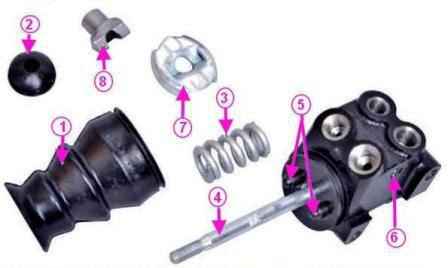
Checking the rear brake pressure regulator is done with the car on wheels, with one person on board and a full fuel tank.
Pressure reading is done diagonally by comparing the rear brake pressure with the set front brake pressure.
If none of the rear brakes are at correct pressure, replace the rear brake pressure regulator.
Be sure to check both brake circuits. Right front 7 left rear wheel and left front 7 right rear wheel.
Remove the protective caps, unscrew the brake bleeders from the right front and left rear brake mechanisms and connect pressure gauges to them.
Bleed the brake system through the bleeders on the pressure gauges.
Start the engine.
Depress and hold the brake pedal in a position corresponding to the pressure in the front brake slave cylinder of 100 bar.
Fix the readings of the pressure gauge connected to the working cylinder of the rear brake.
Repeat the operation on the other brake circuit.
If the pressure values exceed the allowable values given in tables 1 and 2, the rear brake pressure regulator must be replaced. Repair of the regulator is not provided.
The pressure difference in the working cylinders of the rear brakes should not exceed 4 bar, regardless of the load on the rear axle.
Reference pressure values in the rear wheel cylinders
Reference pressure values are shown in tables 1 and 2.
Without taking into account the distribution of the load along the axles (wire The pressure test is carried out with a full fuel tank)
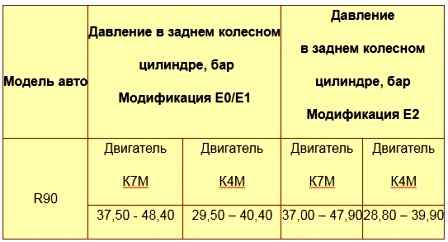
Taking into account axle load distribution:
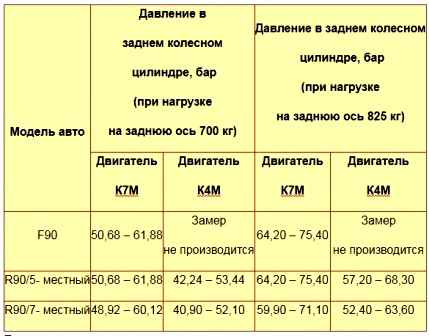
Pumping the brake system.
Checking the effectiveness of the braking system.







